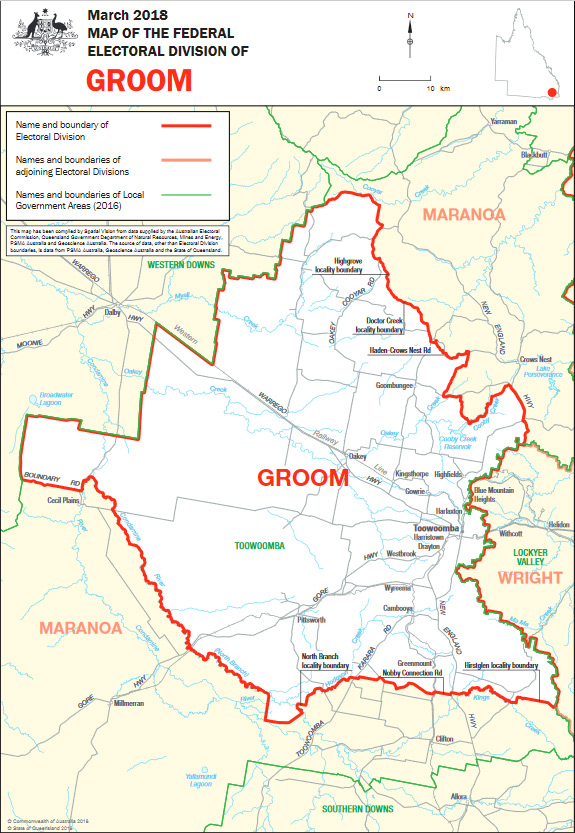About Groom
The electorate of Groom has a rich history in the Australian Parliament.
Named in honour of Sir Littleton Ernest Groom, 1867–1936, Speaker of the House of Representatives (1926–29 ) and a Member of the House of Representatives (1901–29 and 1931–36).
Groom covers the city of Toowoomba and rural areas to the west of the city contained entirely within Toowoomba Region council area. The many towns and villages, such as Pittsworth, Oakey, Goombungee, Kingsthorpe, Drayton and the emerging communities of Highfields, Westbrook and many more.
Groom was created as part of the expansion of the House of Representatives at the 1984 election.
Groom was first won in 1984 by the National Party’s Tom McVeigh. McVeigh had been Member for Darling Downs since the 1972 election, and was elected Member for Groom in 1984 when Darling Downs was abolished. Darling Downs had previously centred on Toowoomba, which became the centre of the new seat of Groom.
McVeigh retired in 1988, triggering a by-election. Bill Taylor succeeded McVeigh and served for a decade, retiring in 1998. Ian Macfarlane won at seat of Groom for the Liberal Party and was part of John Howards Coalition Government.
Ian Macfarlane retired at the 2016 election and John McVeigh; the former State Member for Toowoomba South was elected as the new LNP Member.
John McVeigh retired in 2020 and triggered a by-election, at which Garth Hamilton was elected as the new Federal Member for Groom.

